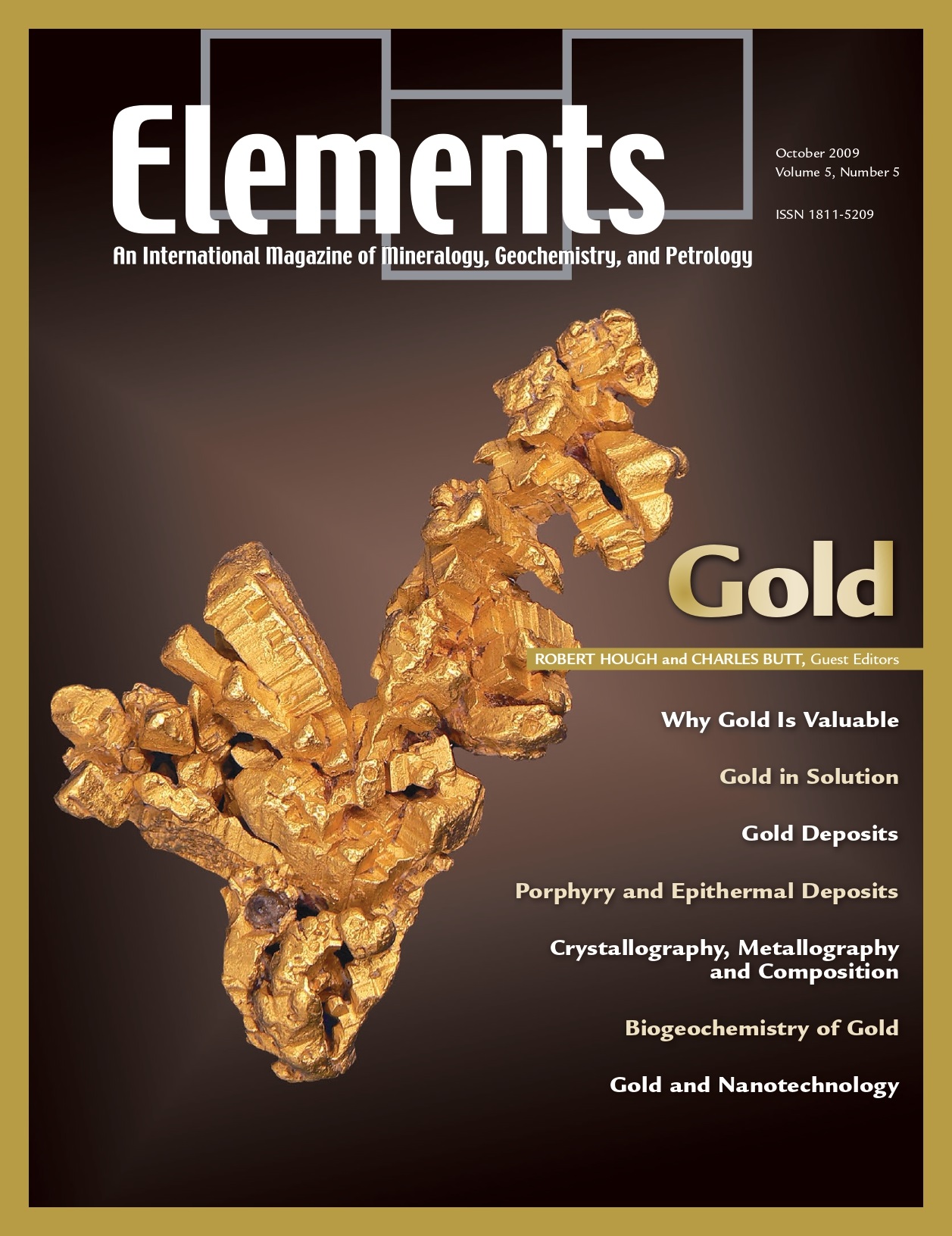Gold, October 2009, Vol. 5, No. 5
$20.00
Gold fascinates researchers in many sciences. As well as being attractive as a precious metal, gold has important physical and electrical properties that cause it to be an ’advanced material’ for manufacturing and drug delivery in medical science.
Gold
October 2009, Vol. 5, No. 5
Gold fascinates researchers in many sciences. As well as being attractive as a precious metal, gold has important physical and electrical properties that cause it to be an ’advanced material’ for manufacturing and drug delivery in medical science. Geologically, gold can be transported in solution in ambient as well as high-temperature fluids, and its mineralogy, composition and crystallography are often used to decipher and interpret the genesis of different gold-bearing ore systems. Because gold is a metal, its study requires a detailed understanding of metallography. Finally, nanocrystals of gold and its alloys display unique properties, and these products are finding widespread application in manufacturing and are also seen in the natural environment. This issue of Elements describes new observations about a metal that has fascinated humans since early times. Current research spans the fields of geochemistry, crystallography, and metallurgy, and includes novel studies in the materials sciences.
Why You’ll Love Elements Magazine:
- Expert Contributors: Articles written by renowned researchers in the field of geoscience.
- Engaging Content: Join a community of readers who are passionate about Elements.
- Exceptional Quality: Each issue is printed on high-quality paper with stunning visuals and detailed illustrations that bring complex scientific concepts to life.
Order your copy of the October 2009 issue of Elements magazine today and explore the world of gold.
Related products
-
Phosphates And Global Sustainability, April 2008, Vol. 4, No. 2
$20.00Phosphorus is a unique element: it is essential to the existence of all living forms, and as such controls biological productivity in many terrestrial and marine environments; but when in excess, it leads to uncontrollable biological growth and water-quality problems. This has become a common environmental issue, resulting from our careless use of phosphorus in agriculture, yet phosphate ore deposits, from which fertilizers are produced, are a finite natural resource.
-
Toxic Metals In The Environment: The Role Of Surfaces, September 2005, Vol. 1, No. 4
$20.00Metals are prevalent in the environment. They are derived from both natural and anthropogenic sources.
-
Glasses And Melts: Linking Geochemistry And Materials Science, October 2006, Vol. 2, No. 5
$20.00Geological interest in studying melts stems from early recognition that melts play a fundamental role in determining the physical and chemical behaviour of magmas and magmatic processes. However, due to the inherent difficulties associated with working at high temperatures, much of the geological research over the last 30 years has used quenched melts or glasses as proxies for melts themselves.






